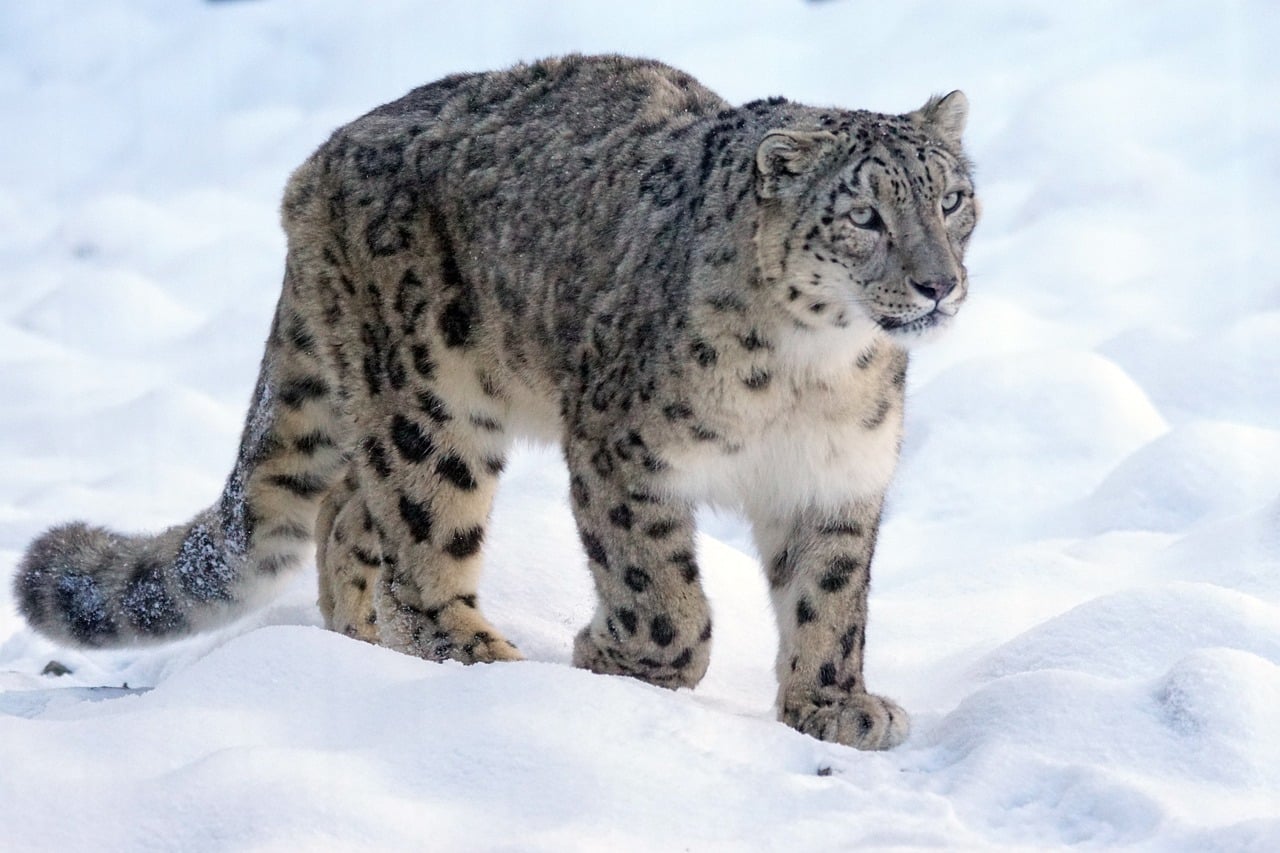Shutterstock
In the animal kingdom, survival often relies on the ability to blend into the environment. Camouflage has evolved in many species, helping them avoid predators or become more effective hunters. Some animals have developed incredible strategies to remain unseen. These creatures are experts at disguising themselves, adapting their appearance with remarkable precision to match their surroundings. Their ability to stay hidden in plain sight is nothing short of extraordinary, allowing them to thrive in the wild while remaining nearly invisible to the naked eye.
Chameleon
 Shutterstock
Shutterstock
One of the most famous camouflage experts in the animal kingdom is the chameleon, known for its ability to change color to blend into its environment. Chameleons possess special skin cells called chromatophores that contain pigments, which can expand or contract depending on the chameleon’s emotional state, temperature, or surrounding environment. While their color-changing ability is often associated with hiding from predators, chameleons also use it for social communication with other chameleons. In their natural habitats, which include forests and deserts, they use color to blend with leaves, branches, and other natural features to avoid being seen.
Leaf-Tailed Gecko
 Shutterstock
Shutterstock
The leaf-tailed gecko is a true master of disguise, native to the forests of Madagascar. Its body is perfectly adapted to blend with tree bark and leaves, making it incredibly difficult to spot. The gecko’s tail, which resembles a dead leaf, provides it with an almost flawless camouflage that helps it evade predators. When the gecko remains still, it looks like just another piece of foliage, making it nearly invisible in the dense forests where it resides. This stealthy adaptation allows the gecko to stay hidden while it hunts for insects or avoids larger predators like birds.
Snow Leopard
 Shutterstock
Shutterstock
The snow leopard, found in the mountainous regions of Central Asia, has a stunning coat designed for camouflage in snowy, rocky environments. Its thick fur is light-colored, with dark rosettes and spots that mimic the dappled light and shadows of rocky terrain. This pattern helps the snow leopard blend seamlessly into the snowy landscapes where it hunts for prey such as wild goats, sheep, and smaller mammals. The snow leopard’s ability to remain hidden while moving through the rocky, snowy wilderness is essential to its survival, making it one of the most effective predators in its harsh environment.
Octopus
 Shutterstock
Shutterstock
Octopuses are among the ocean’s most skilled camouflage artists, capable of changing both the color and texture of their skin to blend into their surroundings. This ability is made possible by special skin cells known as chromatophores, which contain pigments, and papillae, that allow the skin to change texture. Octopuses can mimic the appearance of coral reefs, rocks, or the ocean floor, providing them with both camouflage and protection from predators. They use their camouflage to ambush prey as well, remaining nearly invisible until they strike. This combination of color and texture-changing abilities makes the octopus an outstanding predator and survivor in the deep sea.
Arctic Fox
 Shutterstock
Shutterstock
The Arctic fox’s ability to blend into its environment is essential to its survival in the harsh, cold climates of the Arctic. During the winter months, the Arctic fox’s coat turns white, allowing it to blend perfectly with the snow and ice. In the warmer months, its fur changes to brown or grey, providing camouflage in the tundra’s rocky terrain. This seasonal change in fur color helps the fox avoid predators, such as polar bears and wolves, while hunting small mammals in its frozen environment. The Arctic fox’s ability to adapt to the changing seasons is a vital trait for its survival.
Cuttlefish
 Shutterstock
Shutterstock
Cuttlefish are some of the most advanced camouflage specialists in the ocean, capable of changing not just their color but also the texture of their skin. This allows them to blend into an array of environments, from the sandy ocean floor to vibrant coral reefs. The cuttlefish has specialized pigment cells called chromatophores that help it mimic different colors, and its skin can change texture with the help of papillae, creating a variety of surfaces from smooth to bumpy. This remarkable camouflage helps the cuttlefish avoid predators and sneak up on prey, making it an expert in both defense and hunting.
Owl Butterfly
 Shutterstock
Shutterstock
The owl butterfly, native to Central and South America, is named for the large eyespots on its wings, which resemble the eyes of an owl. When threatened, the butterfly can display these large eyespots to confuse and intimidate potential predators, such as birds. The eyespots create the illusion of a much larger, more dangerous creature, helping to ward off attacks. Additionally, the underside of the owl butterfly’s wings is dark and camouflaged, allowing it to blend into tree bark or leaves when it’s at rest. This combination of visual deception and camouflage helps the owl butterfly avoid being eaten.
Pygmy Seahorse
 Shutterstock
Shutterstock
The pygmy seahorse is one of the smallest and most elusive creatures in the ocean, perfectly adapted to hide among coral reefs. Its body is covered in tiny, bumpy structures that help it blend seamlessly with the coral it inhabits. The pygmy seahorse’s coloration also matches the colors and patterns of the coral, making it nearly invisible to predators and divers. Despite its tiny size, the pygmy seahorse is a master of camouflage, relying on its perfect disguise to survive in the vibrant but dangerous world of the coral reef.
Potoo Bird
 Shutterstock
Shutterstock
The potoo bird, native to Central and South America, has a very unique camouflage technique. Its feathers are perfectly designed to resemble tree bark, allowing it to blend seamlessly with its surroundings. When the bird is perched during the day, it remains motionless, mimicking the appearance of a broken branch or a section of tree trunk. This stealthy disguise helps the potoo bird avoid predators such as hawks and eagles. Its ability to stay still and blend into the environment is a key strategy that allows it to survive in its forested home.
Stick Insect
 Shutterstock
Shutterstock
Stick insects, or walking sticks, are the epitome of camouflage, resembling twigs or branches in their natural habitat. These insects are elongated and thin, with bodies that perfectly mimic the shape and texture of twigs, allowing them to blend seamlessly with trees and shrubs. Their coloration matches the bark of trees or leaves, further enhancing their disguise. When they remain motionless, stick insects are nearly impossible to spot, offering them an excellent defense against predators like birds. Their camouflage is a vital survival tool, ensuring they remain hidden and safe from danger.
Flounder
 Shutterstock
Shutterstock
Flounders are bottom-dwelling fish that have evolved to blend perfectly with the seafloor. Their flat, oval-shaped bodies allow them to lie completely motionless on the ocean floor, where their color and patterns mimic the surrounding sand, rocks, and seaweed. Flounders are capable of changing the color of their skin to match the environment, enhancing their ability to hide from predators. Their camouflage is a key feature for avoiding larger fish and seabirds while they wait for smaller prey to swim by, making them highly effective hunters in their underwater world.
The Art of Hiding In Plain Sight
 Shutterstock
Shutterstock
In the wild, camouflage isn’t just a neat trick—it’s a crucial survival tool. Animals that blend seamlessly into their environment have a better chance of avoiding predators and succeeding in their hunt for food. These creatures are masters at staying hidden, using camouflage to outsmart threats. It makes them some of the most fascinating and skilled animals in the world. So, the next time you spot a perfectly camouflaged creature, remember: they’re not hiding—they’re simply acing the art of survival!









